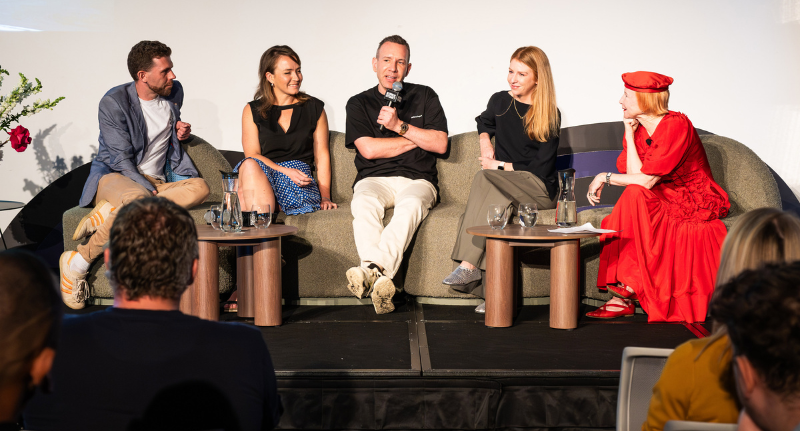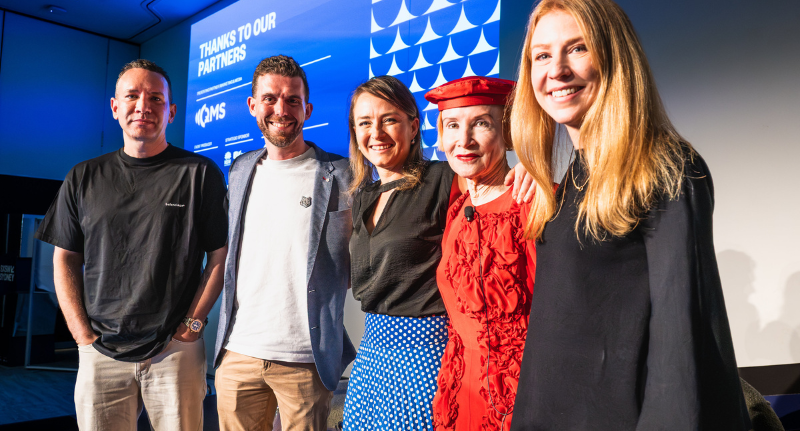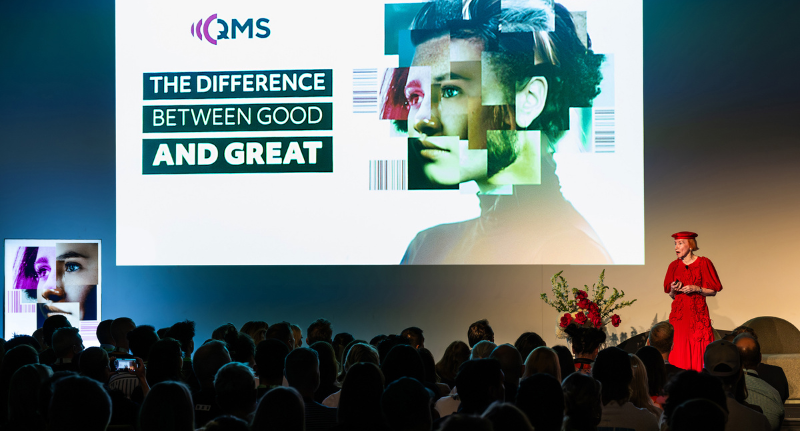After years of chasing reach and efficiency, Australia’s marketers are resetting their focus to build brands anchored in meaning, creativity, and quality.
That was the clear message from new research presented by QMS at SXSW Sydney, during the “Great Minds, Greater Brands: The Global Marketing Face-Off That Decodes The Future Of Enduring Brands” session, which explored the changing priorities of brand leaders in Australia and the UK.
The findings and current trends in marketing were then unpacked by a panel of marketers from Netflix, Brown Family Wine Group, Coles, and Skingraphica in a lively debate, hosted by QMS Global Advisor and member of the MFA Hall of Fame, Anne Parsons.
The study, aligned to research conducted by Ocean Outdoor UK, surveyed more than 25 Australian marketing leaders across 18 major advertising categories questions around today’s challenges and the most important factors in strategy
The QMS study surveyed marketers about where investment, confidence, and creative energy are heading.
The results showed that while Australia’s marketers remain optimistic, they’re under pressure to balance growth, measurement, and long-term brand health.
“In Australia, we had three big challenges, sustainable growth, unified measurement and attention,” said Parsons.
“In the UK, AI was the biggest challenge, and that was really interesting. But here, more than half of our audience said it’s actually about differentiation.”
The research also revealed that Australian marketers remain heavily focused on brand quality and creativity as the key to standing out, and that DOOH has become a central channel for driving both.
“Creativity took a huge part of what they were talking about, and when they were talking about what’s making creative better, they said the power of the screens has made the creative much braver,” said Parsons.

The panel of Tony Broderick, Georgia Bruton, Mat Baxter and Bianca Mundy discussed big issues in marketing with Anne Parsons.
Balancing brand and performance
For Georgia Bruton, CMO of Brown Family Wine Group, the research reflected a tension familiar to many marketers on how to build long-term equity while delivering short-term performance.
“The balance between long and short term only works when you know what success looks like for your brand. If you’re measuring brand love, then metrics like awareness and emotional connection should be front and centre, things that tell you how people feel about you, not just what they buy.”
That sentiment was echoed by Bianca Mundy, Head of Brand and Media at Coles, who described the retailer’s challenge as connecting daily customer transactions with deeper brand sentiment.
“As a supermarket, we must get customers in the door to shop with us daily and weekly, but we’re also very focused on what do customers think about our brand. When we think about the short term and the long term, we’re really thinking about one thing, are we really clear what customers want to see from us?”
Mundy noted the balance between tactical and brand activity often comes down to how the creative lands in different environments.
“Good creative is really different depending on the channel you’re on,” she said. “We look at it through both lenses: what builds emotion and what drives response.”
Adding to the debate, Mat Baxter, CEO and Founder of new skincare brand Skingraphica, said marketers should stop thinking of short-term and long-term marketing being separate. Citing Nike as an example, he pointed out that brands struggle when they think in terms of one or the other.
“Even brands as iconic and as smart at branding as Nike have disproportionately, in my view, been way too reliant on lower funnel activity, and have started to realise that they’ve started to do that at the expense of their brand.
“For me, I don’t think it’s one or the other. They’re the same thing. Marketing is marketing.
“If you’re a brand believer, then you have to also believe that you’ve got to build and nurture your brand. It’s sort of like a tree, right? If you think of a tree that sprouts fruit, and fruit is what you’re selling, then if you don’t water the tree it dies and there’s no fruit.
“A lot of marketers have stopped pouring water on their tree and then wonder why the fruit is not juicy.”
Baxter argued that while performance pressures have never been greater, consistency and creative courage over time are what sustain brand equity.
The Power of Creativity
Tony Broderick, Director of Marketing for Netflix ANZ, agreed that true brand-building requires creative bravery and a willingness to act, especially in the market he works in.
“It’s really hard to do great work if you have to make sure it’s almost perfect before you’ve launched it. If you’re working in culture, you’re following a trend line that hasn’t completely been drawn, so you’re going to have to take risks and do things that cannot be measured best or easiest.
“We do create real intention of making sure there is a good data-led starting point. But ultimately, most of our work should be a risk to some extent.
“I would say the most important thing is that we just come together afterwards and we really debate the outcomes really openly and honestly.”
For Baxter, great creativity should come from instinct over data, and the willingness to back a bold idea even when there’s no immediate guarantee it will work.
The new measure of success
As the QMS research made clear, marketers in Australia are no longer satisfied with chasing visibility.
Parsons summed it up best when talking about the QMS research.
“There was a constant reference to moving from reach to attention. We’re moving from data and measurement to knowledge. We’re going from cost to value. We’ve summarised it as being the difference between good and great is actually quality.”
“The marketing landscape has never been more complex, and this research focuses on the universal challenges facing marketers while highlighting the unique strengths of the Australian market.
“What we’re seeing is a mature understanding that sustainable brand-building requires moving beyond simple reach metrics to encompass quality, attention and measurable effectiveness. The insights will help shape how brands approach enduring success in today’s rapidly evolving environment.”

The panel at SXSW Sydney.
What does this mean for QMS?
At the close of the event, Christian Zavecz, Chief Strategy Officer at QMS Media reflected on how the findings will shape their approach, as DOOH evolves beyond reach into more influence.
“This backs up what we’ve been saying to our clients,” he told Mediaweek afterwards. “We speak to our clients that DOOH is just like another digital media.
“You can utilise tech to change messaging, to make it contextually relevant. You can use data to inform that. So, it’s a great space to be because it is continuing to be innovative and growing. It’s growing in terms of spend. It is very competitive, which keeps you on your toes. You’ve got to continue to innovate and do things better.”
“But this research also allows us to take a broader view, we can now have a conversation with our clients with a greater perspective on what they are really after.
